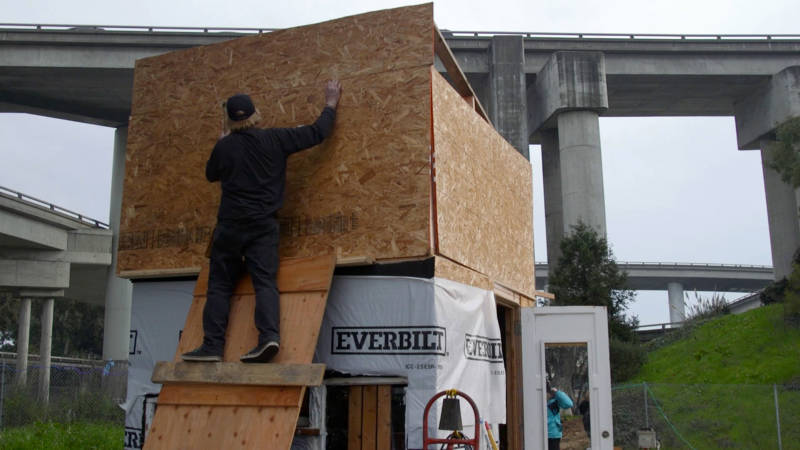On Thursday morning, scores of Oakland police officers in tandem with the Department of Public works, showed up to clear a unique homeless encampment called “The Village” at 36th Street and Martin Luther King Jr. Way, near the MacArthur BART Station. The camp had been a grassroots partnership between homeless residents, local neighbors, and activist groups like Feed the People and Asians for Black Lives.
On inauguration weekend, they had begun building tiny homes and other amenities here in a public park, which they say the city had neglected for decades. They say this camp was in direct response to the homelessness crisis in the Bay Area and that around 16 people had taken up full-time residence here.
For nearly two weeks, scores of volunteers had helped build four tiny homes from pallets and plywood. Others had served hot meals from a makeshift kitchen, spread mulch over muddy grass to prepare for edible landscaping and provided 24/7 security for the dozen or so homeless people they say were residing there full time. They had also pulled together a donations tent, an information tent and a medical tent — all run by volunteers. Some had started calling it “The Promised Land.”
So when police and city workers arrived to vacate and demolish it, they were met by a passionate crowd of nearly 100 of the encampment’s supporters — some wearing neon-green “legal observer” caps from the National Lawyers Guild and others chanting and carrying signs that said “homelessness is not a crime.”
One of the camp’s regular volunteers is Linda Grant. She’s an Oakland-born mother of six children. She said she’s been homeless before and understands how hard it is to survive on the street.
